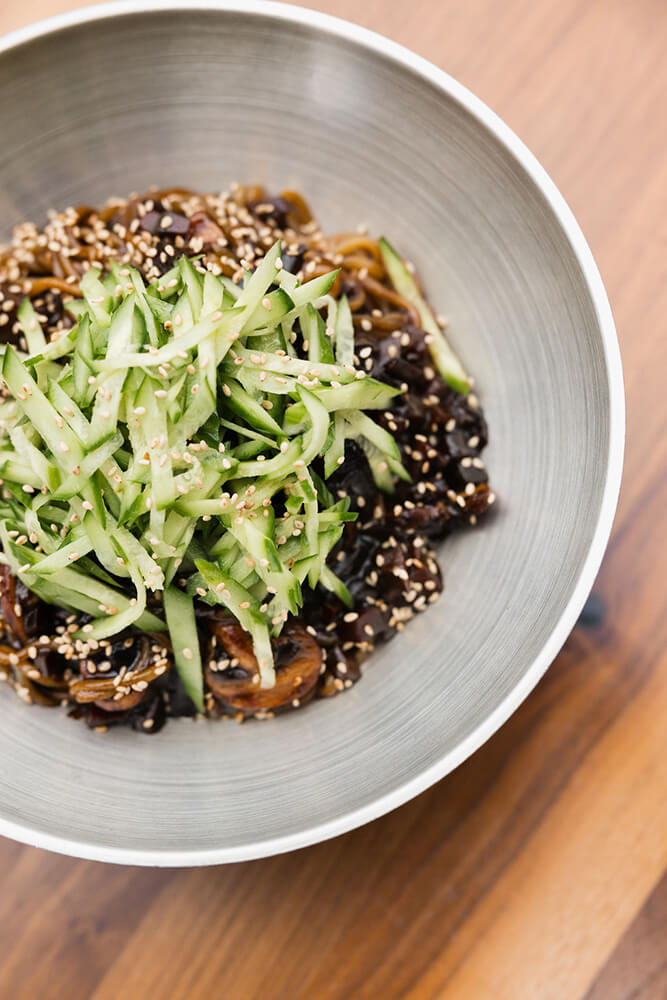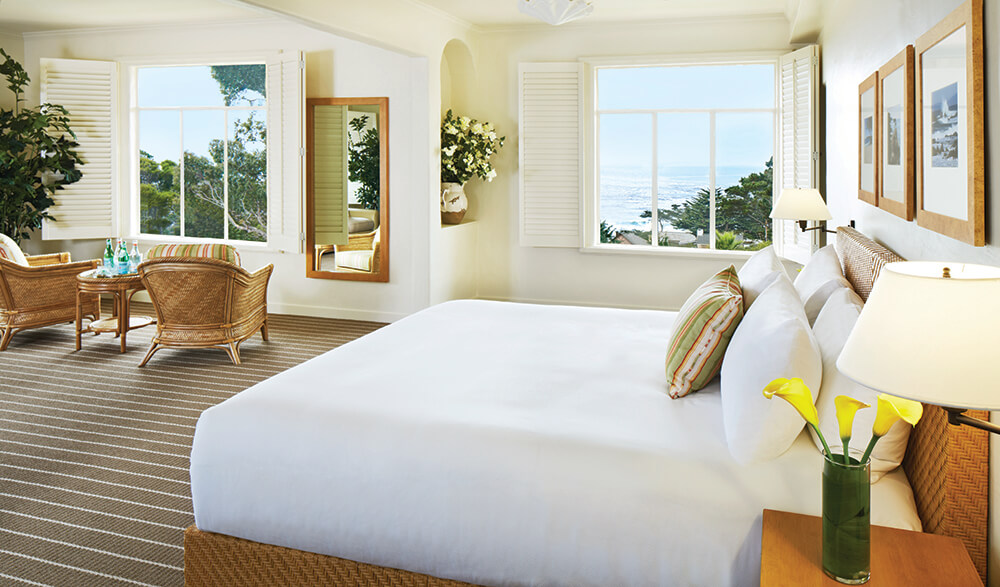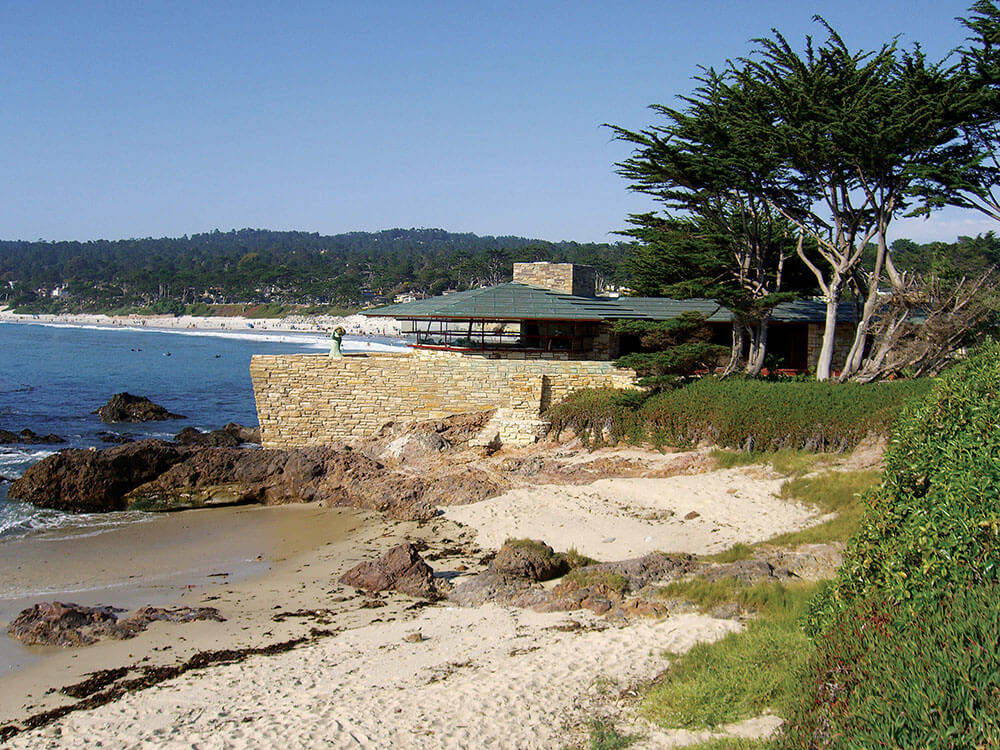Words by Sharon McDonnell
Carmel-by-the-Sea has always been noticed. A century ago, it drew the attention of poets Robinson Jeffers and George Sterling (who dubbed San Francisco the “cool grey city of love”), authors Jack London and Sinclair Lewis, photographer Ansel Adams and an abundance of other artists. It caught the eye of Brad Pitt, who bought the castle-like Seaward House in 2022 for $40 million. Monaco billionaire Patrice Pastor spent the past decade buying $100 million of property in and near the town, including Frank Lloyd Wright’s only oceanfront home, the Clinton Walker House.
Famed for its storybook-style cottages, dozens of galleries and manicured beauty, the chic former bohemian art colony just experienced its biggest hotel renaissance in the past two years, with several new hotels and some major lodging facelifts, plus six new restaurants, including Michelin-starred Chez Noir. But well-known Carmel still has treasures yet to be discovered.
“I’m courtyard-crazy,” says Gael Gallagher of Carmel Walks, who enjoys pointing out “beauty bursts” on our walking tour, from the town’s 41 charming courtyards and hidden passageways to Spanish-style tiles that lend pops of color and pattern. The oldest, Der Ling Lane, is a wood-arched, cobblestoned and brick-paved alley and courtyard we entered from Ocean Avenue, the town’s main street that’s lined with galleries and shops. It’s home to the first of the town’s 18 wine-tasting rooms, Galante Vineyards. It’s also the only one whose owner’s great-grandfather, James Devendorf, co-founded Carmel-by-the-Sea. Jack Galante makes mostly Bordeaux-style red blends at his winery. The wine labels feature nuggets of cowboy philosophy, and the rug in its tiny tasting room depicts cowboys holding lassoes aloft, reflecting his childhood on a ranch in the Carmel Valley. Jack also leads wine trips around the world, from fishing trips to Alaska to jaunts to Sardinia and Corsica to adventure weekends in Montana.

The lane is also home to Xocolatl Garden, a shop for single-origin chocolate bars from 66 countries, with daily tasting of four samples (perhaps a jerk-seasoned 70% dark chocolate from Jamaica or the shop’s own Choquiero brand, spiced with chipotle, cayenne and coconut sugar), for just $5.
In contrast, Dawn’s Dream Winery is known mostly for chardonnay and pinot noir from the Santa Lucia Highlands and for its philanthropy. “My dream was to tie this brand to nonprofits to keep women and children reaching for the stars,” says Dawn Galante, Jack’s wife, who partners with a local nonprofit each year, like a women’s shelter or Jacob’s Heart for children with cancer, and also donates money and wine to nonprofits. “I grew up with a single mother in Detroit who was always giving back.” Another winery, Caraccioli Cellars, has gold medals to show for its sparkling methode champenoise wines.
Nicolas Cocina de Herencia, the grandest-looking new restaurant that opened in 2023, offers high-end Mexican food with creative twists amid a dozen chandeliers in a cavernous 5,000-square-foot space. I was enchanted by its lamb chile relleno, a pepper filled with apples, pears, raisins and ground lamb, in a sauce composed of white chocolate, pomegranate arils, macadamia nuts and spices—apparently an inspired riff on my all-time favorite Mexican dish, chiles en nogada, a specialty of Puebla state.

Another surprise: superb Korean food at Jeju Kitchen, which opened in 2024. My jajangmyeon, chewy buckwheat noodles with fermented black bean sauce, sliced zucchini, diced carrots and pork belly, were sheer delight. “Korean kids grew up with this the way American kids do with mac and cheese,” notes owner Ashley Wolff, who uses her Korean mother’s recipes. Her take on the beloved American comfort food adds kimchi and scallions. “The acidic taste cuts into the cheese and cream (and adds a satisfying crunch),” she adds.
Both restaurants are in Carmel Plaza, a shopping center packed with eateries. Toro, opened in late 2020, offers top-quality sushi, including specialty rolls lightly-seared to meld the flavors and others topped by unagi (eel) sauce as well as sake cocktails, flights and a global wine list (thanks to its sommelier co-owner) that I didn’t expect.
Called the town’s “grande dame,” La Playa Hotel, the 1905 mansion of chocolate heiress Angela Ghirardelli and her painter husband, emerged from a stylish $20 million refresh of all 75 rooms and public areas in late 2023. The luxury Spanish Revival-style lodging features an outdoor pool, beautiful gardens, rooms with “barmoires” (an armoire stocked with ingredients and recipes for craft cocktail-making) plus ocean, garden or village views and a Champagne buffet breakfast. It also boasts the best deal in pricy Carmel-by-the-Sea: at Bud’s Bar cocktails cost only a dime during a daily 10-minute time slot, chosen at whim by the bartender.

A classic since opening in 1952, the whitewashed Tally Ho Inn charms with wall tapestries, gas fireplaces and suites with private decks that offer ocean views, just off Ocean Avenue. I sipped wine next to the outdoor fireplace in the small public patio, which also has a Pacific view. Newcomer Stilwell Hotel, a boutique hotel opened in May 2024, features two levels of patios with fire pits, waterfall features and a pizza oven, plus 42 guest rooms in serene neutrals with marble baths.
I made a beeline to Tor House, poet Robinson Jeffers’ home, a small stone cottage and a four-story stone tower in a jaw-dropping setting on Carmel Point, right above the ocean. Jeffers and his wife came here because friends compared the rugged coastal scenery to the cliffs of Cornwall, England. He constructed the cottage with a contractor, but built the tower himself. Inspired by those in rural Ireland, he hauled over boulders from Carmel Beach. A docent recited his poems on my tour, many inspired by the region’s idyllic nature. The poet lived in the home from 1919 to his death in 1962, and packed it with treasures, from an ancient Roman statue of a boy on a dolphin to a carved stone head from Cambodia.

“Carmel is not so much an art colony as it is a work of art,” wrote historian Carey McWilliams back in 1930. But far from being preserved in amber, it’s a living artwork still in the making, one whose beauty only grows with time.


